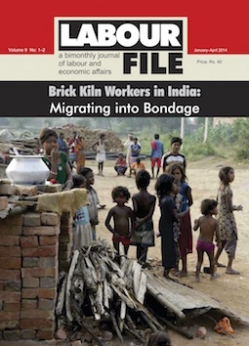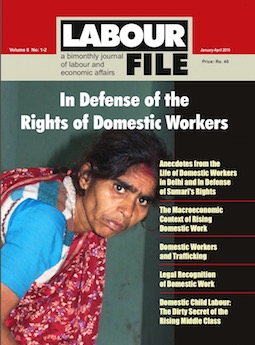Striking For the Right to Strike
The nationwide general strike called by the six left trade unions to demand a review of the Supreme Court’s judgement on the right to strike and to protest the “anti-people” and “pernicious” policies of the National Democratic Alliance government, halted activities in all states affecting life in varying degrees.
The success of the strike can be gauged from the fact that the media reported the strike had a “paralytic effect”. Trade union leaders congratulated the workers for the success of the strike. The president of the Centre of Indian Trade Unions (CITU), M K Pandhe, told press persons that the working class had “magnificently responded” to the strike call.
Business was adversely affected due to the day-long strike by officers and staff of nationalised banks. The Reserve Bank of
According to reports from states, workers staged dharnas, demonstrations and rallies in large numbers on streets and in front of government offices. Though officially the BMS, HMS and the INTUC did not support the strike, their rank and file did participate in some parts of the country.
Near-Total Strike in Southern States
All southern states saw a near-total strike.In
Reports from districts indicated that the response was good, though not affecting normal life. Business establishments remained open. The government did try to foil the strike and eight CITU leaders were arrested from different parts of the state.
A total bandh was observed in different districts of Karnataka and life came to a nearstandstill with even business establishments, industries and public and private transport observing the strike call. Former Minister S K Kanta, Maruti Manpade, member of the state secretariat, CPI(M) and others led rallies, demanding political parties to include in their manifesto, the reversal of the Supreme Court judgement. About 50, 000 employees of public sector undertakings, banks, insurance companies and private and unorganised sector workers participated in the rallies. Among government offices, the income tax, postal and telegraph offices remained closed. In Doddaballapur, more than 300 anganwadi workers and farmers took out a peaceful procession. In other districts, gold mine and beedi workers also observed total strike.
The strike more or less “crippled” life in Kerala. The general strike called by the Samyukta Trade Union Samithy, a combine of trade unions brought life to a standstill in the state. Industrial units, businesses, banks and markets, all remained closed on account of the strike. Public and even private vehicles were not allowed to ply on the roads. The participation varied from 50 per cent to 78 per cent by the workers and at the state PSUs between 38 per cent and 94 per cent. The Samyukta Trade Union Samithy congratulated the workers for making the strike a success.
Employees’ Union Kerala circle secretary, R N Pata Nayar, said a majority of the 20,000 telecom employees, including members of unions affiliated to the INTUC and the BMS, stayed away from work and took out marches in the districts. Although the INTUC and the BMS had dissociated themselves from the strike, workers owing allegiance to them also appeared to have joined the strike. The CITU state general secretary, P K Gurudasan, termed the strike an “unprecedented success.”
Strike paralysed work in the southern districts of Tamil Nadu. Centre for Indian Trade Unions and All India Trade Union Congress functionaries staged a “road roko” in 14 places in rural Tirunelveli and 1,015 workers, including 290 women, courted arrest.
In other states like Goa and
Normal Life Affected in West Bengal, Assam
The general strike called by the Centre of Indian Trade Unions (CITU) and other leftist central trade unions affected normal life in
A large number of agitating workers of the left-affiliated trade unions, including some leaders were arrested from different parts of
Workers Come Out to Streets in Northern States
In
In
Teachers of the
Title of the Article: Striking For the Right to Strike
Name of the Journal: Labour File
Volume & Issue: 2 , 1
Year of Publication: 2004
Month of Publication: January - February
Page numbers in Printed version: Labour File, Vol.2-No.1, Labour in 2003 (Struggle Notes - Striking For the Right to Strike - pp 68-70)
Weblink : https://labourfile.com:443/section-detail.php?aid=73




.jpg)
.jpg)


